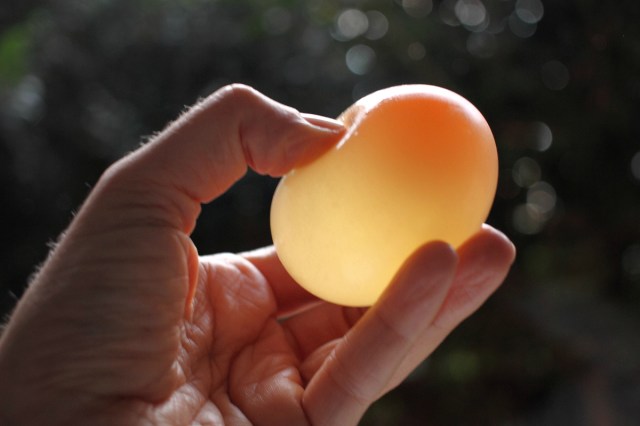Let’s just all agree—eggs are pretty amazing! They are surprisingly strong and you can use them to do all sorts of STEM activities to learn about osmosis, strength, air pressure and physics. Use your bounty of Easter eggs to try out some of these science experiments with eggs!
Walk on Eggs
How can you walk on eggs without breaking them? An egg’s unique shape gives it tremendous strength, despite its seeming fragility.
Insider tip: if this science experiment has you in the mood for eggs, check out our list of the best egg-cellent egg recipes for kids.
Make Eggs Magical
This “look ma, no hands, wires or mirrors” trick will get them every time; an egg being sucked into a jar while your little scientist delightedly looks on is always a hit. To perform this illusory feat, you’ll need a glass jar with an opening just smaller than an egg (think: old school milk jug) and a peeled, boiled egg. When you and your little scientist have checked these items off your list, it’s time to start the show. Mom or dad should toss a lit match into the glass jar, followed by your mini lab assistant, who’ll quickly set the egg over the opening. Abracadabra! Alakazam! The match dies out; the egg gets (seemingly) inexplicably sucked into the bottle. And just like that you’ve performed another bit of parent magic without breaking a sweat.
Why it works: The match uses up the air inside the bottle. Once that happens the pressure outside the bottle is greater and pushes the egg down into the bottle.
Squeeze an Egg
You may have seen this science experiment with eggs make its way around TikTok this past summer with people trying to crush an egg with their biceps. You'll find the science behind it described on Science-Sparks and everyone will be cringing when little hands put the big squeeze on a fragile egg. Try as you might, that baby won’t break (until you crack it into a pan to make breakfast for dinner afterward).
Brain Boost Factor: The egg’s shape is clearly stronger than it looks.
Disappearing Egg Shell
Can you and the kiddos solve the mysterious case of the disappearing egg shell? Following the simple how-to at Go Science Kids, you’ll learn the step-by-step and talking points about the process along the way. Warning! Although it’s totally non-toxic, toddler aged kids will be tempted to squeeze the egg at the end so keep an eye out!
Crystal Egg Geodes
This grow-your-own experiment that lets you grow crystals inside an egg shell. Be sure to get alum powder that contains potassium, or else you won't get any crystal growth. Adding drops of food dye to the growing solution yields some super cool crystals. A perfectly formed geode takes about 12-15 hours to grow, making this a great weekend project. Get the full scoop on how to do it from Learn to Grow.
The Egg Drop Challenge
If you have fond memories of building your own egg drop contraption for high school Physics class, this is a great one to share with the kids. They'll love learning all the science behind what can protect the egg and constructing their own egg drop contraption. Get the full scoop here.
Eggs and Osmosis
Teach kids all about how liquids pass through semi-permeable membranes in this fun science experiment with eggs from the QuadSquad.
Make a Folding Egg
Kids will love being able to bounce this egg between their hands and fold it up into their pocket during this egg science experiment. How does it work? Steve Spangler shows you in this video.
—Taylor Clifton & Kate Loweth
RELATED STORIES
The Ultimate At-Home Easter Guide
13 Perfect Easter Paper Crafts for Kids
21 Totally Unique Ways to Use Extra Egg Cartons
